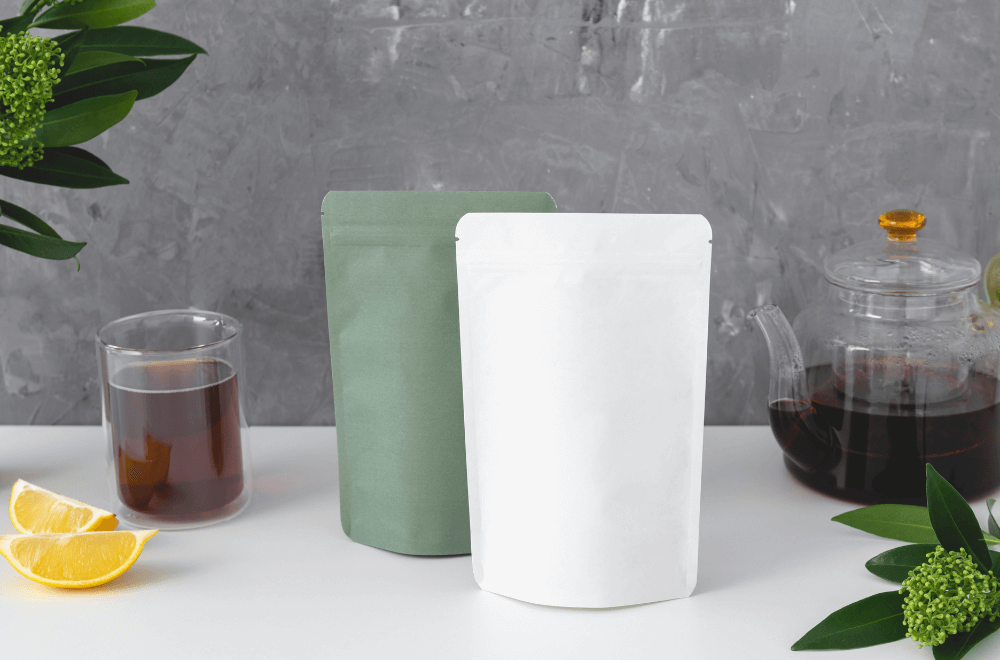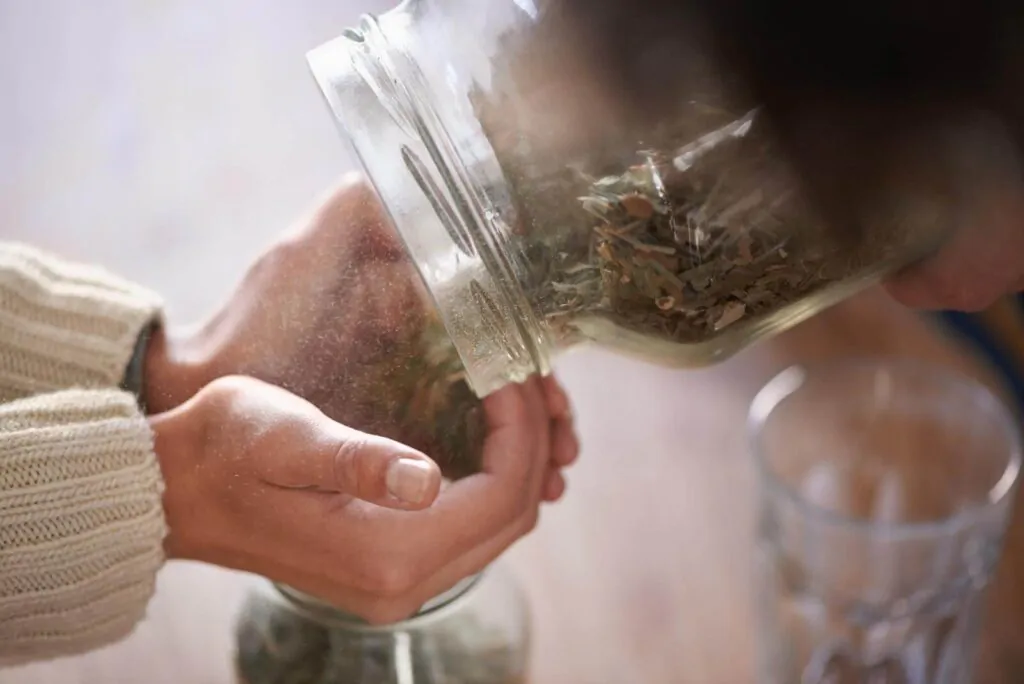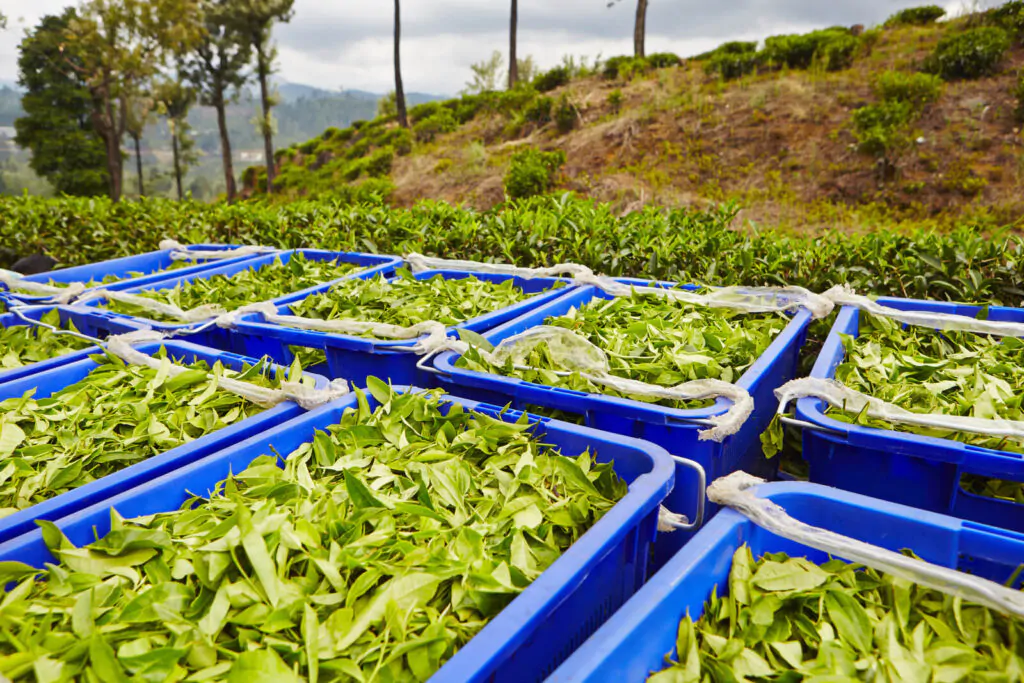Aromatic, rich tea leaves fill your mug with a swirl of flavors unlike anything else. But it’s highly sensitive to its surroundings, so how is tea transported?

Have you ever wondered how tea is transported from tea gardens all the way to your local grocery store? Tea is commonly transported in paper sacks lined with aluminum foil in standard containers on ocean freighters. The paper keeps the tea light for shipping, while the aluminum foil keeps the tea from absorbing surrounding odors.
The logistics of tea are different for bulk tea than for small-batch tea, but the challenges of transporting tea remain the same. When transporting tea, the five primary challenges are moisture, heat, odors, sunlight, and air. So, how do they overcome these difficulties when transporting tea?
Storing Tea For Transport
Although paper sacks are common, it isn’t the only way tea can be stored for transportation. For example, tea can be placed in plywood chests lined with aluminum foil. Modern craft tea distributors are also beginning to turn to vacuum-sealed containers.
Bulk tea is usually brought to a storage facility at the port before shipment. However, pests, such as tobacco beetles and drugstore beetles, can infest the tea at this stage if it’s not stored correctly.
From there, the tea is loaded onto the shipping freight to be transported overseas. Many tea transport contracts will contain a clause that requires the tea to be kept away from other cargo that may affect the tea.
For example, if the tea is stored in the same container as fruits, other strong-smelling foods like hay, or odoriferous chemicals, the tea are almost certain to absorb those odors. This is a risk both in storage pre-shipment and while in transport.
One of the craft tea industry’s primary goals is to shorten the time it takes from the day they harvest the tea to the day it gets to you, the consumer. Not only does this keep the tea as fresh as possible, but it also minimizes the risk of the tea degrading in storage.
Tea Quality Control
Transporting tea is challenging not because it is bulky or heavy but because tea requires a significant amount of care if it’s going to remain a quality product. I don’t know about you, but low quality is off the menu when it comes to my tea.
Moisture is a tea killer. If there’s moisture in the tea, it won’t survive intact. Tea can start to mold in transit if there’s too much moisture.
And if it doesn’t mold, it’s sure to get an unpleasant musty taste and smell. Musty tea is undrinkable.
Oxidization is another risk. Different oxidation levels actually make up the different types of tea. Green tea is less oxidized than black tea, for example.
Usually, oxidation is stopped at the desired amount through the drying process, but that doesn’t mean oxidization can’t begin again. An unwanted amount of the three environmental factors, heat, sunlight, or air, can begin the process anew, turning your green tea into something else entirely.

The antioxidants, catechins, carotenoids, and chlorophyll make tea oxidize after drying. These antioxidants can begin to oxidize again when exposed to the three environmental factors.
Teas already heavily oxidized, like oolong and black tea, are less likely to be affected by further oxidation. However, unoxidized and low-oxidized teas, such as white and green tea, are much more at risk.
It’s the same reason tea experts recommend good tea storage at home. Storing your tea in a cool, dry place in an airtight container will keep your tea fresh for longer. It’s the same concept, just on a larger scale during transport.
Shipping The Tea
The most common and cost-effective way to transport tea is by ocean freighter. Shipping this way only adds a few cents to the final price of the tea.
High-end, craft tea is often shipped by air. Air shipment offers the highest quality but will add significantly to the final price.
Shipping By Ocean Freight
Although shipping by ocean freight is cost-effective, it has downsides as well. Shipping by ocean freight puts the tea at greater risk of deterioration because it is in storage for much longer.
Ocean freighters also have more physical challenges. The recent increase in tropical storms has proven to be burdensome in keeping shipments on time. And piracy is still a significant risk, especially in the Southeast Asia region, which is near the major tea-producing countries.
If the volume is high, ocean freighters can overwhelm port crew. It wasn’t that long ago that ocean freighters were stuck for weeks outside the ports of Los Angeles and Long Beach, waiting to be unloaded.
On the upside, the primary benefit of ocean freight is that it is economical. It has the added bonus of being environmentally friendly, with one of the smallest carbon footprints in the shipping industry.
Shipping By Air
The high cost of air shipping is a barrier for many tea companies and tea consumers buying on a budget. Unfortunately, the challenges the air shipping industry faces mean that the price will only go up from here.
There’s the high price of fuel. With oil costs increasing, and no electric airplanes on the horizon, this price increase will translate into higher costs for shipping tea.
The limited number of airports is also a restriction on the supply side of air shipment. Each plane can only carry so much, and it has to compete with many other aircraft to get the chance to take off and land.
Qualified pilots are also in short demand. Without enough pilots, the cost continues to rise. For ocean freights, crewless freight ships are starting to be tested.
If money weren’t a factor, air shipping would undoubtedly be superior. It reduces the amount of time in storage, keeping the quality of the tea high. It’s not as sensitive to changes in the weather, meaning it’s reliable.
And it’s versatile, meaning it’s not restricted to coastal ports.
Short-Distance Tea Transport
It’s not all oceans and airways, though. Inland transportation has to get the tea where it needs to be.
How is tea Transported From the Farm

Trucks often carry freshly harvested tea leaves to the factory to be processed. The process will look different depending on the farm and what kind of truck they have available, but the tea will likely be held in big open-air bags.
Although it’s important not to contaminate the tea leaves at this stage, there aren’t as many difficulties. Because the tea leaves have not been processed, they don’t need to worry about environmental factors as much.
How is tea Transported To The Blender
After the tea is transported overseas to its destination country, it will usually be driven by truck or rail to the blender’s facility. From there, the blender will mix the tea with whatever other ingredients it wants in the end product and begin packaging.
Tea packaging can be in tea bags or loose leaves. In either scenario, the tea will be placed in the consumer packaging and repacked into boxes. The blender will then give the boxes to the wholesaler, who will distribute them to the retailer, and then on to you! Consumer packaging will likely have some way of combatting the environmental factors of moisture, heat, odors, sunlight, and air.
This makes it easier for the shipper to handle the tea, as there is less risk of degradation. If you liked this post, you might also be interested in learning how is tea grown and how is tea harvested.
